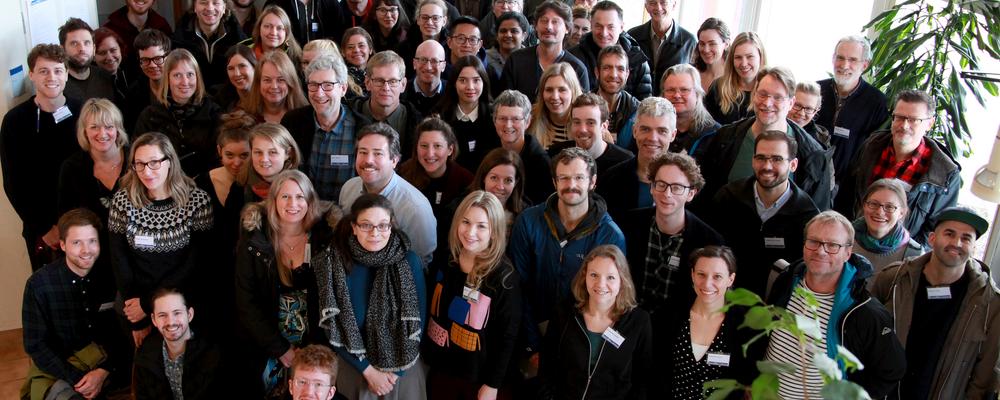
Ten years of CeMEB
More than 500 scientific publications, 30 doctoral theses, almost 80 conferences, workshops and courses. In a recently published article, the achievments within the Center for Marine Evolutionary Biology is summarized.
The Center for Marine Evolutionary Biology, CeMEB, was established in 2008 through a ten-year research grant, a so-called Linnaeus grant. With Professor Kerstin Johannesson as director and Eva Marie Rödström as coordinator, CeMEB has developed into a meeting place for marine evolutionary researchers from all around the world.
"The fact that we have produced great research comes from great teamwork. I think that CeMEB's biggest contribution in the long term is that we have raised the profile of evolutionary biology within the marine ecosystems, says Kerstin Johannesson.
Models and inversions
Research within CeMEB covers many different marine species, from phytoplankton to algae and fish, and several different issues. A central theme is the evolutionary effects of climate change such as ocean acidification and declining salinity, and to explore the mechanisms behind local adaptation in, for example, bladder wrack, cod and eelgrass.
The article highlights that researchers in CeMEB have developed and used mathematical models to predict the survival and distribution of marine species in a future marine environment. They were also early in understanding the importance of inversions, a kind of mutation in which part of the chromosome is flipped, as a key to rapid adaptation to environmental changes.
"Our findings of inversions in Littorina snails came just before many others also began to find such. We were also much better able to understand their role in evolution thanks to all the research we have done previously on the snails", says Kerstin Johannesson.
Assemblies a success factor
CeMEB currently has just over 60 members from mainly Swedish universities, but also from other European countries. Gathering all members in recurring general meetings to present results and future plans, is one of the cornerstones of the centre. Well-known evolutionary researchers are also invited to these "CeMEB Assemblies" to inspire. The meetings are informal with lots of time to network and plan for new collaborations.
"I think the Assemblies is one of the most important success factors for CeMEB, and I spread this tip as often as I can", says Kerstin Johannesson.
Interview: Susanne Liljenström
Read the article:
Ten years of marine evolutionary biology - challenges and achievements of a multidisciplinary research
Authors: Johannesson K, Leder EH, André C, Dupont S, Eriksson SP, Harding K, Havenhand JN, Jahnke M, Jonsson PR, Kvarnemo C, Pavia H, Rafajlović M, Rödström EM, Thorndyke M, Blomberg A.
Published in Evolutionary Applications in May 2022.
